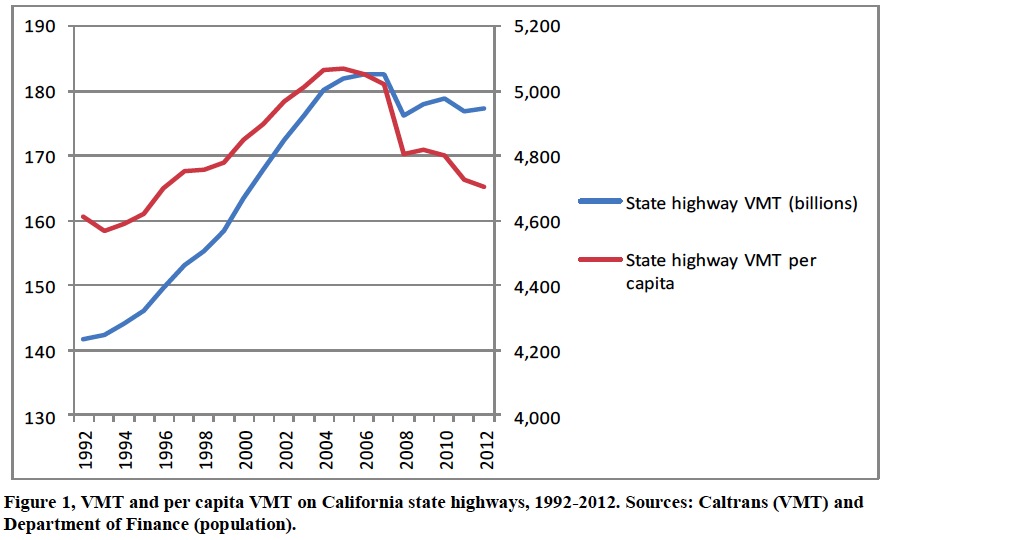STATE SMART TRANSPORTATION INITIATIVE
Executive Summary
This report provides an assessment of the performance of the California Department of Transportation (Caltrans) and recommendations for improvement. It is the product of a team assembled by the State Smart Transportation Initiative (Appendix A), which interviewed Caltrans staff and stakeholders (Appendix B) and reviewed a wide range of materials from and about the department (Appendix C).
The report is quite critical of Caltrans’ management and operations. However, we note at the outset that almost all the problems we point to are longstanding, so should not be blamed on Caltrans current management. We also note that Caltrans has many strengths that give us rational hope for its reform. Chief among these is the dedication of much of its top leadership and most of its staff to serving the public interest and improving their department’s performance. This strength was evident to us in the more than 100 interviews we conducted with current Caltrans employees. In those interviews, repeatedly, Caltrans staffers also openly acknowledged problems, many of the department’s own making. We thank our interviewees for their openness, and we acknowledge help from Caltrans administration in providing us with all manner of requested documentation.
The report provides a brief history of Caltrans and of the demands placed on it, a set of findings about Caltrans’ current state, and recommendations for improvement. Throughout, it focuses on the need for modernization and culture change at the department.
Caltrans’ legacy
Caltrans, like other state DOTs, was organized to build a network of trunk highways linking cities. In metro areas, local traffic began to overwhelm these highways, leading to massive construction. Eventually the highway system was largely built-out, and system operation and maintenance became more critical to Caltrans’ job. Yet the department continues to be oriented toward projects—both for new capacity and reconstruction of the existing system.
Two crucial policy changes, unusual if not unique for state DOTs, have reduced Caltrans’ power and capacity to act. One is the evolution of “self-help” counties, which allows local government to fund and often dictate the shaping of transportation systems, including the state highway system. The other is the state’s practice of sub-allocating state funding by formula to the local level, again empowering stakeholders vis-à-vis Caltrans and reducing funds available at the state level.
Demands and expectations on Caltrans have also changed since the Interstate-building era. As early as 1972, when Caltrans was formed out of the Department of Highways, there were calls for more multimodalism and less reliance on auto-mobility. More recent passage of state planning goals in AB 857 (2002) and transportation greenhouse gas reduction strategies SB 375 (2008), signal a need for Caltrans to support reductions in auto travel via low transportation-demand land use patterns. These outcomes are precisely the opposite of what Caltrans was set up to do—foster higher auto-mobility—and the department has not adapted to them. At the same time, Californians are driving less, a trend that creates optimism for achieving state planning and policy goals and that should allow for less spending on highway capacity. Other expectations that have developed since the Interstate-building era include concerns for economic and environmental justice, livability, and economic development. New technologies in planning and operations, and expectations of mode choice have all complicated Caltrans’ world.
Caltrans often has not had to adapt to these changes. When the state vested more funding decisions at the local level, for example, decision-makers seem not to have thought much about how Caltrans would have to change to be a partner rather than a master builder. Sustainability initiatives frequently have worked around, not through, Caltrans—even when transportation is the topic. SB 375, for example, places the onus of GHG reduction on metro-level planning and the Air Resources Board (CARB). The legislature has required many reports from Caltrans, but these have failed to drive fundamental change in the department, which remains oriented toward projects. Note that the current management undertook a program review in 2012, which has spun off potentially important initiatives, such as a smarter system of managing risk, new relationships with self-help counties, and a streamlined design exception process. Many of the department’s program review initiatives overlap with or complement our own recommendations, but the important ones are still works in progress.
About the State Smart Transportation Initiative
www.ssti.us
“The State Smart Transportation Initiative promotes transportation practices that advance environmental sustainability and equitable economic development, while maintaining high standards of governmental efficiency and transparency.”
Tags: CA, California, Caltrans, SSTI, State Smart Transportation Initiative







 RSS Feed
RSS Feed